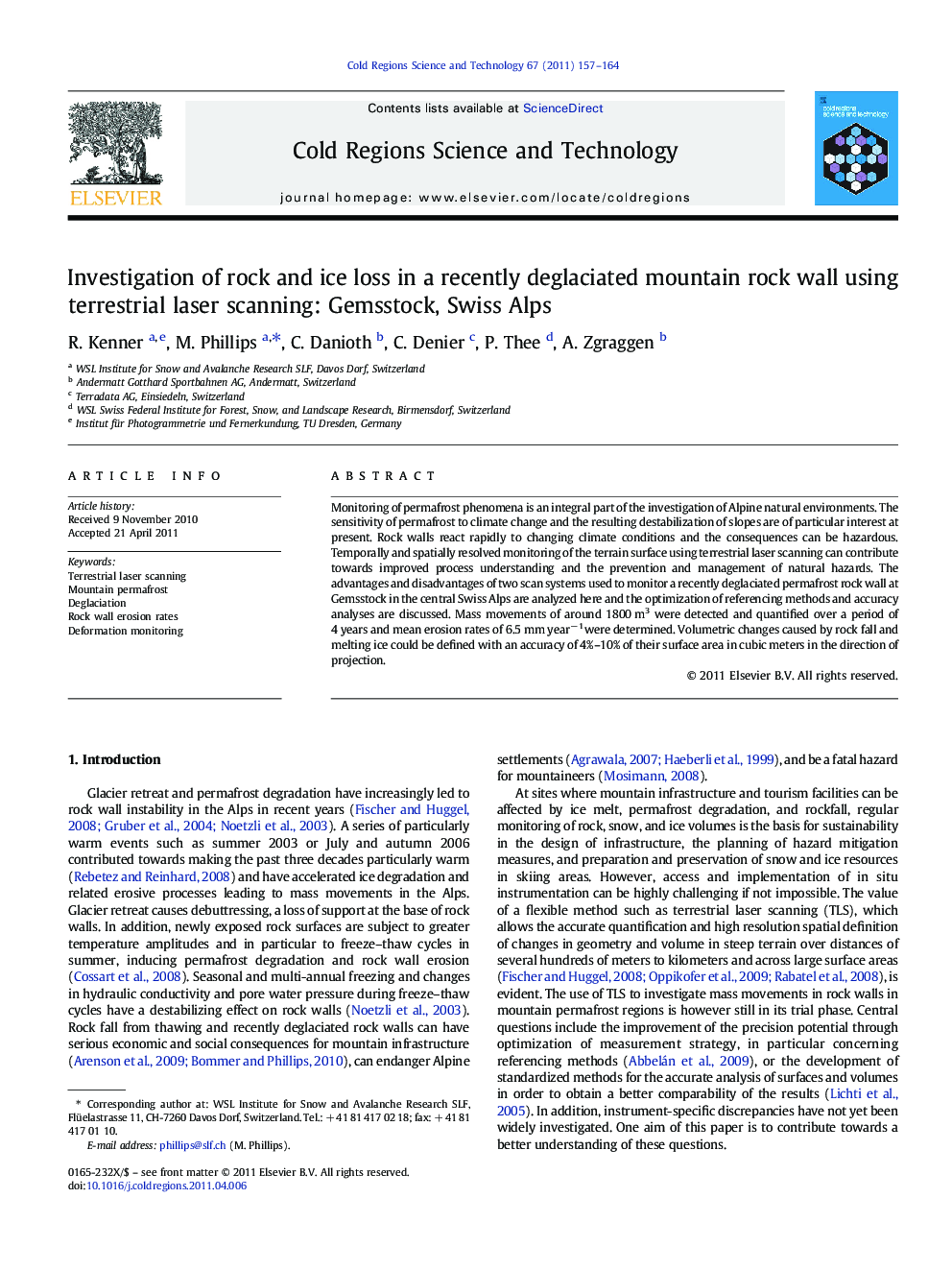| Article ID | Journal | Published Year | Pages | File Type |
|---|---|---|---|---|
| 4676209 | Cold Regions Science and Technology | 2011 | 8 Pages |
Monitoring of permafrost phenomena is an integral part of the investigation of Alpine natural environments. The sensitivity of permafrost to climate change and the resulting destabilization of slopes are of particular interest at present. Rock walls react rapidly to changing climate conditions and the consequences can be hazardous. Temporally and spatially resolved monitoring of the terrain surface using terrestrial laser scanning can contribute towards improved process understanding and the prevention and management of natural hazards. The advantages and disadvantages of two scan systems used to monitor a recently deglaciated permafrost rock wall at Gemsstock in the central Swiss Alps are analyzed here and the optimization of referencing methods and accuracy analyses are discussed. Mass movements of around 1800 m3 were detected and quantified over a period of 4 years and mean erosion rates of 6.5 mm year− 1were determined. Volumetric changes caused by rock fall and melting ice could be defined with an accuracy of 4%–10% of their surface area in cubic meters in the direction of projection.
► Terrestrial laser scanning is used to measure surface changes in a permafrost rock wall. ► Two scan systems are analyzed. ► Referencing methods and accuracy analyses are discussed. ► Mass movements and volumetric changes are quantified over four years. ► Thawing permafrost and deglaciation are causing rock wall instability.
